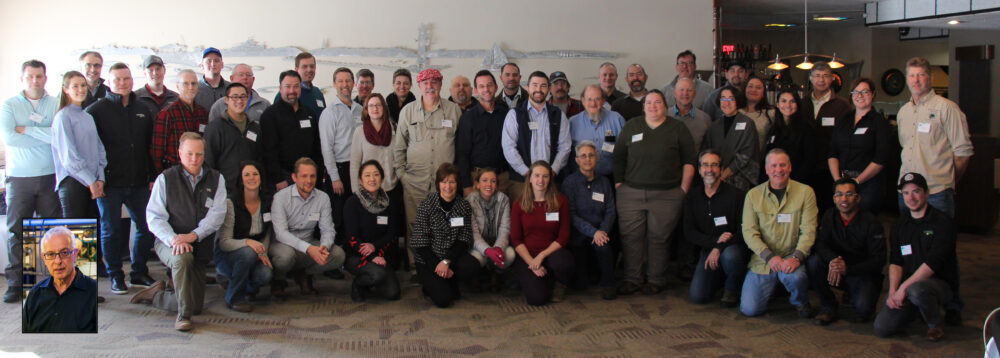Sustainable Aquaculture Systems Supporting Atlantic Salmon
A partnership between academia and industry that will use a transdisciplinary, integrative systems-approach to foster the development of transformative, environmentally sustainable, and economically feasible Atlantic salmon farming in the U.S.
THE RECIRCULATING AQUACULTURE SALMON-NETWORK
FUNDED BY: THE USDA NATIONAL INSTITUTE OF FOOD AND AGRICULTURE
NATIONAL NETWORK LEADS PROJECT FOCUSED ON INDUSTRY PRIORITIES
TO SUPPORT LAND-BASED ATLANTIC SALMON PRODUCTION
THE BACKGROUND
Currently, 95% of salmon consumed in the US are imported. This contributes to $3.4 billion annually to the United States trade deficit. Due to this, The Sustainable Aquaculture Systems Supporting Atlantic Salmon (SAS2) project combines research, education, and extension to support sustainable land-based salmon aquaculture industry. These land-based systems involve a technology known as Recirculating Aquaculture Systems (RAS). RAS pose multiple benefits including enhanced optimization, control and fully contained. Learn more about RAS…
THE PROJECT
In collaboration with major US RAS stakeholders, researchers are focusing on stakeholder-identified priorities to expand this industry. These priorities include research to support egg production, ecologically responsible feeds, increased water recirculation, minimized waste, improved product quality, and economic analyses. For example, the UWSP NADF is specifically investigating out of season spawning of Atlantic salmon to develop procedures that can be utilized by industry for egg production throughout the year.
In addition, the facility and other aquaculture educators will develop RAS-related curricula at multiple education levels. This effort has a strong focus on the urgent need to develop a trained workforce for the growing industry. Also, aquaculture extension agents will work with industry to increase public awareness, engage with local communities, enable efficient technology transfer and ensure fish health and seafood safety.
UWSP NADF FOCUSES ON EGG PRODUCTION RESEARCH
TO SUPPORT YEAR ROUND PRODUCTION
The facility is supporting research to establish domestic, year-round production of eggs for offspring with improved RAS performance. The facility is also supporting extension and educational objectives of this grant.
THE PARTNERS
To accomplish these research, education and extension goals, this project combines experts from across the country including:
NATIONAL COLLABORATION
INDUSTRY, RESEARCHERS & EDUCATORS
University of Maryland Baltimore County (Lead),
University of Wisconsin-Stevens Point Northern Aquaculture Demonstration Facility,
University of Maine,
USDA-National Cold Water Marine Aquaculture Center,
University of Maryland,
Maryland Sea Grant,
The Conservation Fund Freshwater Institute,
University of Wisconsin-Sea Grant
Marine and Freshwater Institute
Morgan State University
EXISTING SUPPORT
The strength of SAS2 is based upon a prior capacity building work of the Recirculating Aquaculture Salmon Network (RAS-N). As a result, the proposed SAS2 research and education objectives are the ranked outcomes of RAS-N, working closely with the salmon aquaculture industry.
 The Recirculating Aquaculture Salmon-Network
The Recirculating Aquaculture Salmon-Network
THE IMPACT
By addressing the sustainable agricultural intensification and value-added innovations goals of the the USDA program, SAS2 is expected to improve sustainable US aquaculture and food systems and enhance life for fish farmers and society.